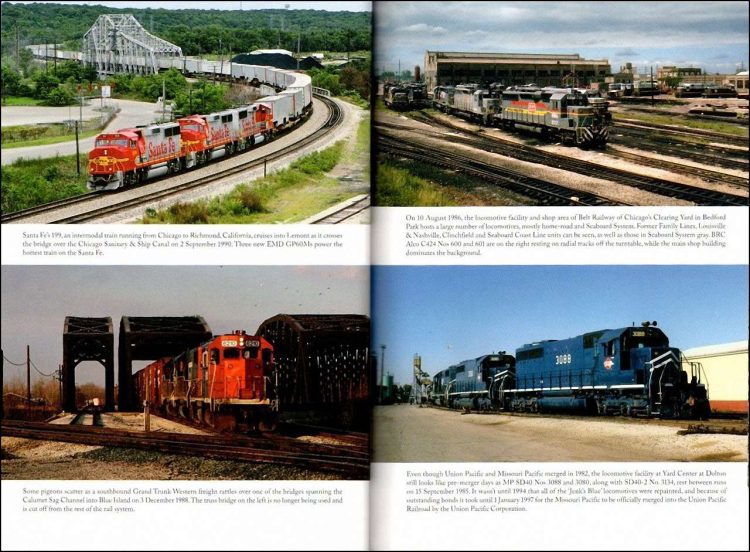Published in July 2022 by Amberley Publishing and written by Mike Danneman, this soft cover book measures around 23.4 cm x 16.5 cm, and has 96 pages and 180 coloured photographs. It has a published price of £15.99 although Amberley Publishing currently has it on offer at £14.39, and at the time of writing it can be obtained from Amazon for £15.99.
As the book is written by an American author, the terminology is in accordance with US practice, such as railroads for railways and grade crossings for level crossings. In general, therefore, my review accords with American terminology.
When I first received this book I thought there must be some mistake, as by looking at American railroads would seem to limit its attractiveness to UK audiences. However, having seen previous books from Amberley Publishing on American railroads, this one turned out to be equally interesting.
The book is purely a photograph album without chapters. All photographs are supported by very informative captions, including the types of train and their locations. The author's efforts are rewarded by the standard of photographic reproduction.
The Introduction provides a useful background to the history of the state of Illinois, including the startling fact that nearly one-third of all US railroad traffic passes through Chicago on over 500 freight trains a day.
With over 50 railroads currently operational in the state, it requires a very clear map with different colours to differentiate between the many different ones, and the map following the Introduction does this very well.
Chicago is the largest city in Illlinois, and as well as its freight traffic it sees over 700 commuter trains and 60 Amtrak trains each day. It was therefore disappointing to find that only four pages in the book show any passenger trains. Even more surprising is that there no photos at all showing any of the city's enormous freight yards.
American railroads are typified by the great number of liveries carried by the different railroads' locomotives, a few of which are seen in the pages below. Also seen in the top-left photo is the type of river bridge common throughout the state.

“Super-power” is a term that can often be applied to US freight trains, and the ones shown below are no exception, with the trains in the top photos below each hauled by four locomotives in tandem.
Although winter in the American Midwest is characterised by heavy snowfalls, Illinois tends to escape the worst of them, although the build-up of snow on the locomotives below proves that the design of the locomotives' front-ends can cope with what has been thrown at them. These pages also show that not all American freight trains are of enormous lengths.
The photo at top-left below shows a scene uncommon on British railways but common on American ones, where different railroads cross each other's line on the level. With less than 1,000 feet difference between the highest and lowest points in Illinois, its nickname of “The Prairie State” is most appropriate, which also results in the state having just four railroad tunnels, one of which is shown on the right below.
The pages below highlight some of the great differences between US and British railroads, with the antiquated signal box, or “tower” in American terminology, bearing little resemblance to its UK counterparts. At the top right is a common scene in the US, with very-long freight trains hauled by multiple locomotives. The two lower photos show how American railroads take advantage of the very-generous US loading gauge with containers stacked one on top of another in what are termed “stack trains”.
In summary, this book is a refreshing change from the current British railway scene, especially freight trains, which tend to be dominated by the ubiquitous Class 66s. Despite my criticism of a lack of photos of passenger trains or Chicago's freight yards, they are more than compensated for by the great variety of trains hauled by locomotives from many different companies with their attendant range of liveries. The lack of lineside fencing on American railroads also contributes to the range of photos included. Recommended for anyone who wants variety in their railway scenes and good value for money.
The book is available to purchase from Amazon and from Amberley Publishing.
RailAdvent would like to thank Amberley Publishing for providing RailAdvent with a copy of the book for review.